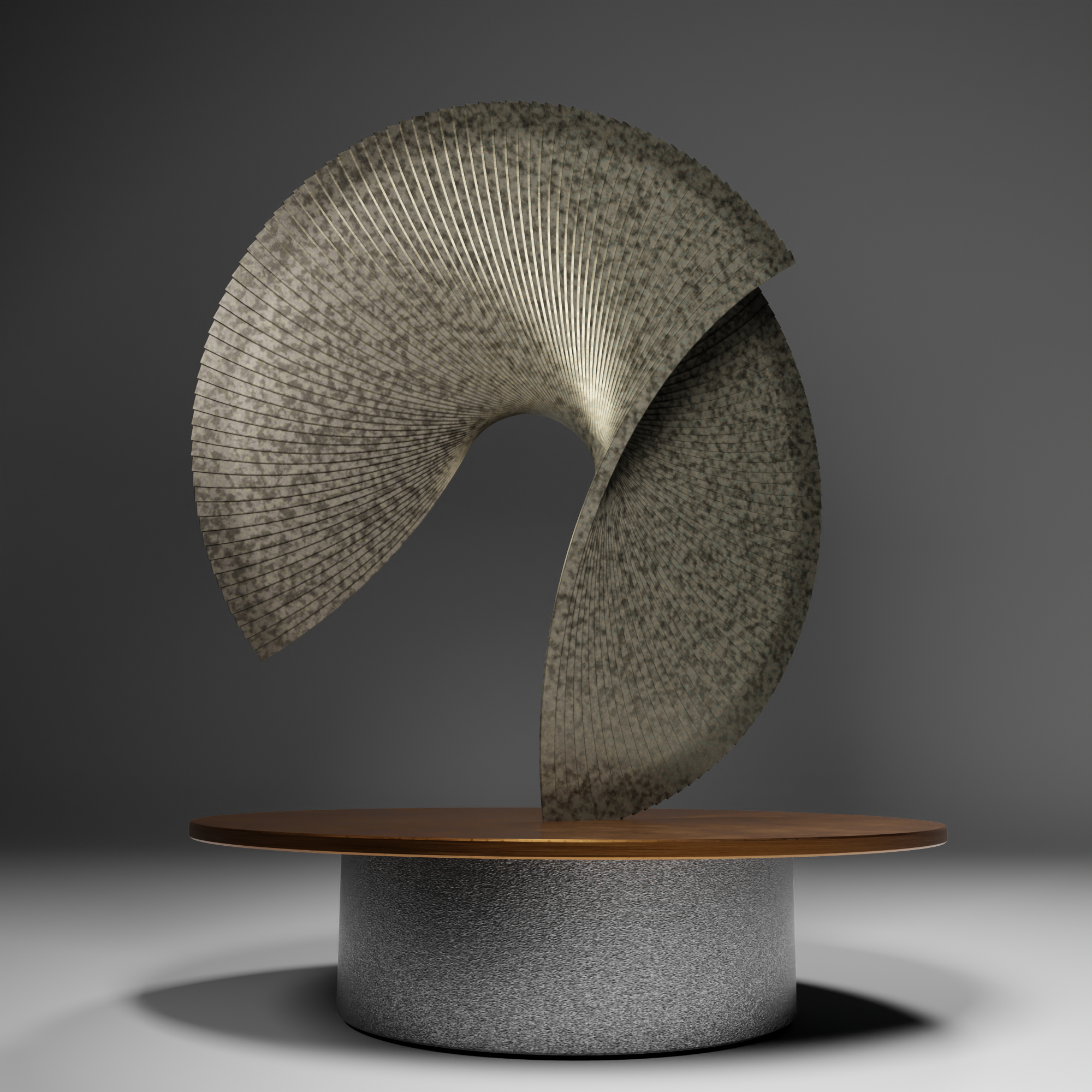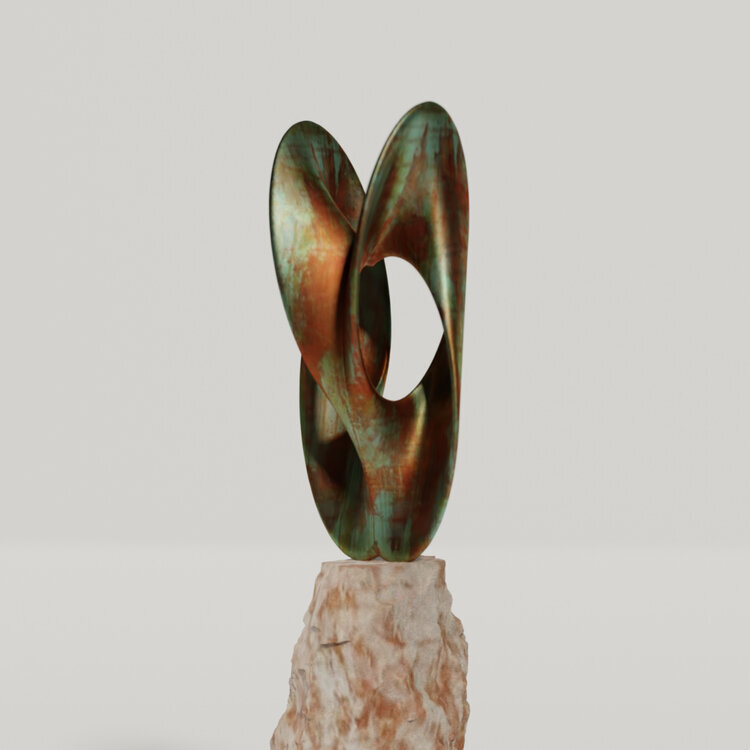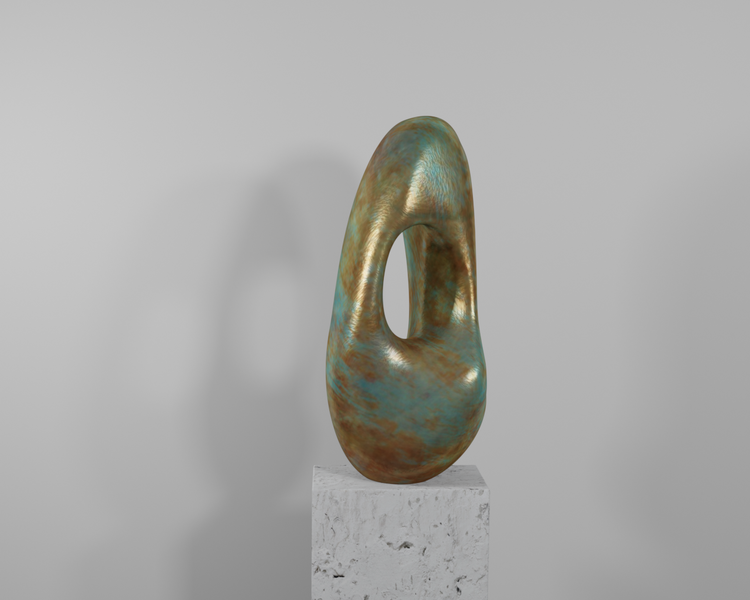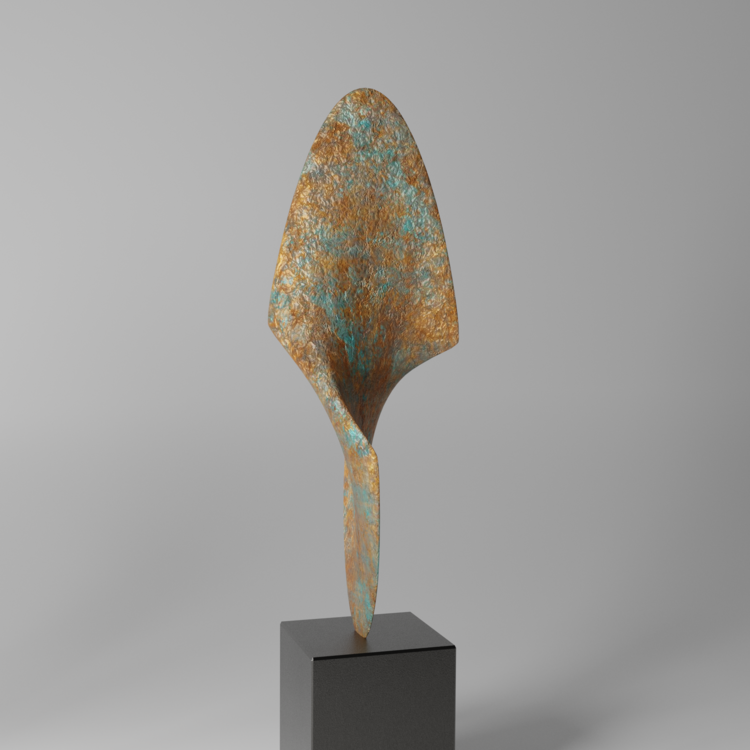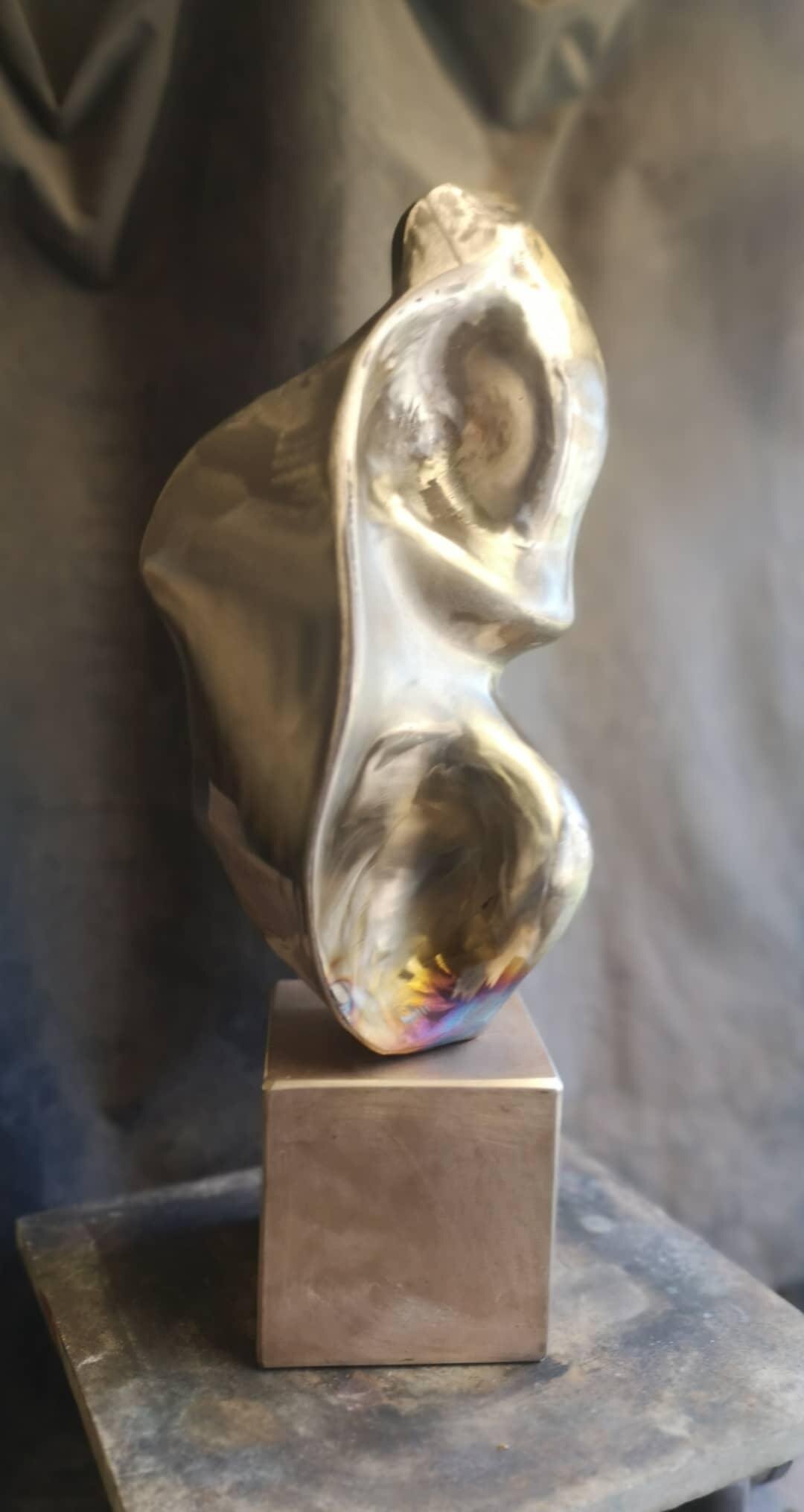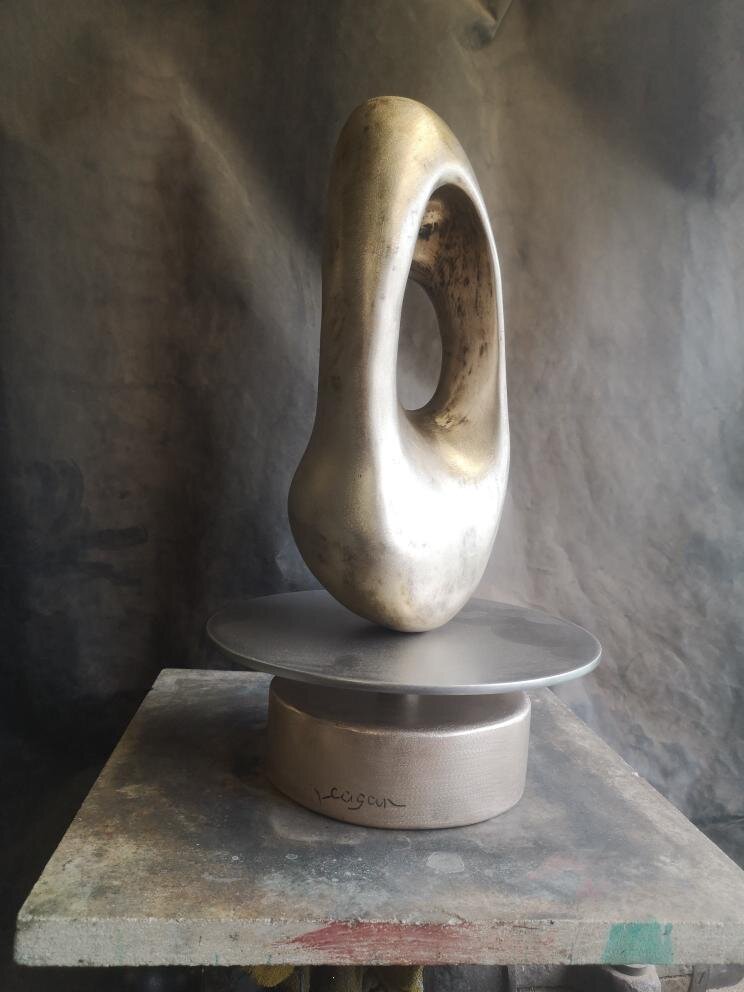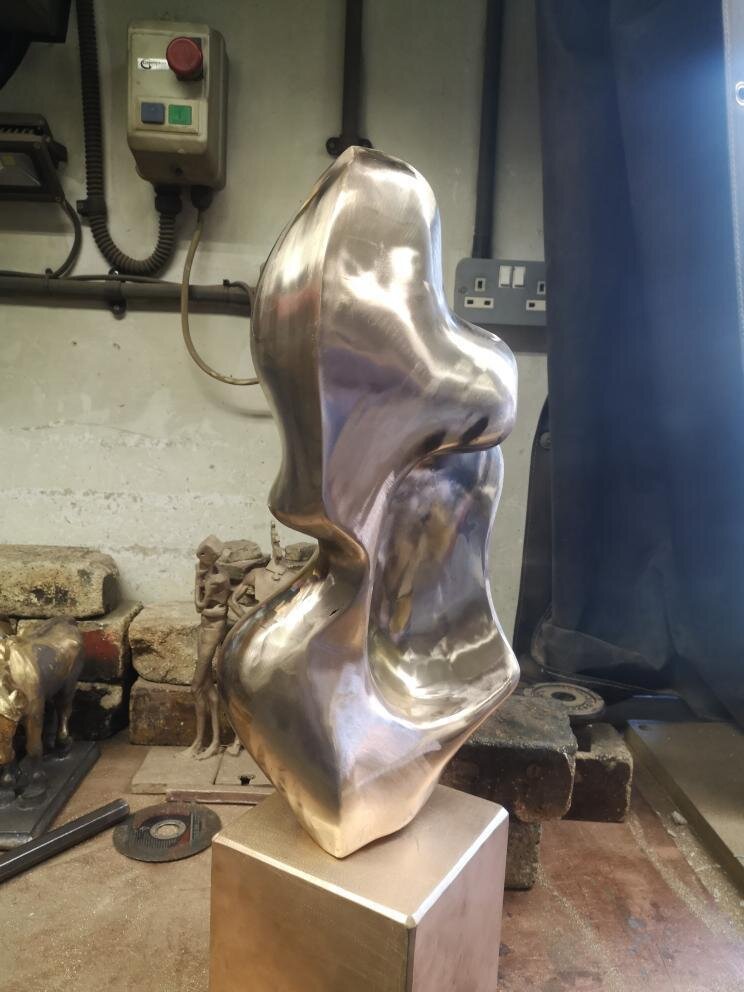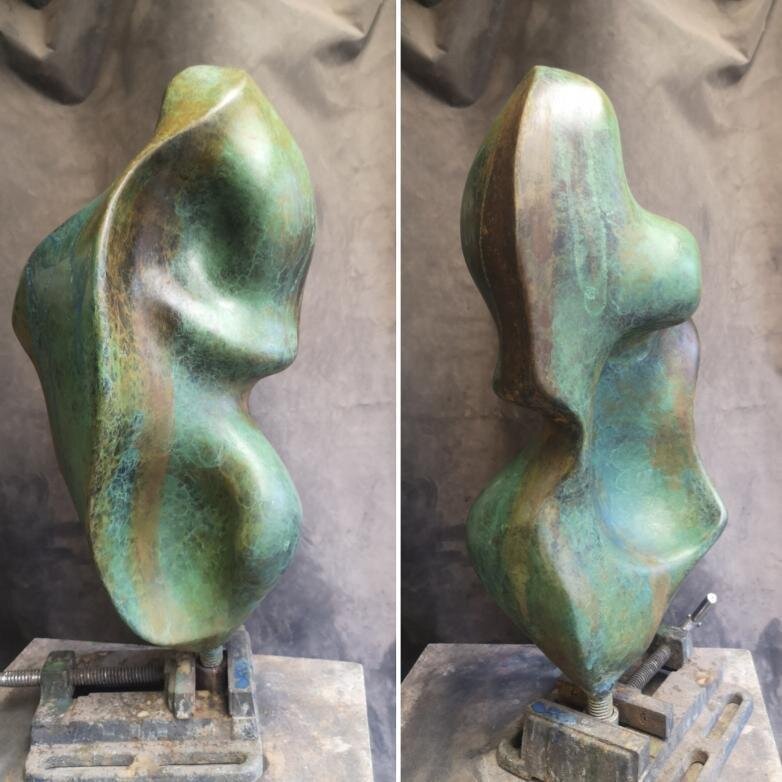< BACK TO ARTISTS & MAKERS
Jack Eagan
HELIO / 491






HELIO / 491
Bronze with stainless steel and stone base
60 x 25 x 30cm
Commissioned Work
Biography
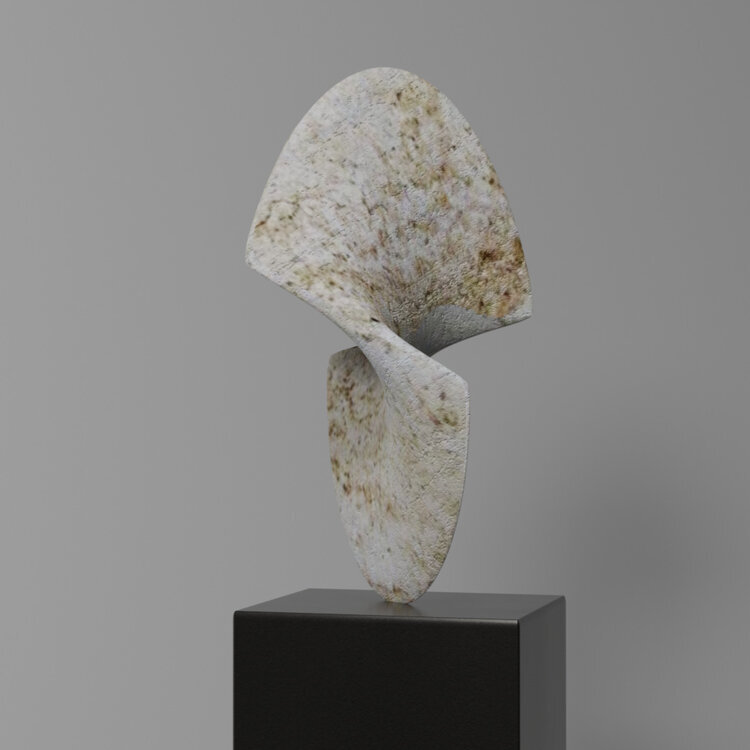
Points of Reference
The solitude of making was the point at which I found a stability in my life, a feeling of certainty that I had found my place.
This point of origin occurred during my time studying ceramics at Camberwell School of Art under the guidance of Ewen Henderson. His influence has played a huge part in shaping my approach, i share his passion for the incidental beauty found in landscape, terrain and geology. I admire and quench my anxieties in the stillness, the awkward physical balance and calm presence that emanates from his beautiful works.
Inspiration often comes from the everyday, like a small piece of driftwood that has been shaped and polished by the grinding motion of the sea, bleached of colour by exposure to the corrosive salt and baking sun. I look to the patterns and rhythms in nature, seed pods, shells, bones, trees, ferns and the formations within the strata of the earth.
I have evolved process that parallel those in nature, turning earth into vitreous stone, solidifying molten metal, grinding edges and corners smooth, polishing surfaces to a mirror reflection, blasting clay to form terrains, heating, freezing, forming, cracking, oxidising are all parts of my vocabulary.

Motivation to get in the studio comes from the thing i haven’t yet seen, I strive to create objects that if they were pulled from the ground, they would look like they belong to another time or place. Objects that have no obvious function, imbued with an essence of something not yet understood. I make things that reflect a balance between being naturally formed and an object that has been formed by hand or by machine. I ultimately make things to enjoy and spend time with and to contemplate their origin and admire their beauty.
Notes on Making
1. Discovering form and texture.
My working method will normally begin with making something from a formless lump clay, I use a range of conventional and unconventional methods and techniques to transform it. I directly modelling by hand, building with slabs and coils, shaping with tools and distorting form with paddles of wood. I distort surfaces by heating with blow torches, which crack, craze and explode areas, revealing beautiful naturalistic textures. I freeze large lumps of clay and by thawing the frozen clay quickly it sloughs like molten ice cream. I blast the clay with powerful pressure washers, tearing away at surfaces and leaving a substrate that looks like a limestone washed by hundreds of years of rain and wind, exposing aggregates held within its structure.
I digitally scan the clay sculpture, not to just capture the finest details within the textures and record an accurate reproduction of the overall form. I also use the digital scanning process unconventionally, deliberately looking to create artifacts and anomalies in the scans, incidental movents that reveal a new texture, a unique distortion, dithering rhythm or digital pattern created in the noise of the scan.
2. Consolidating
I 3d print the digital data into investable patterns, which are made with the knowledge that further work is going to be undertaken when the works are transformed into bronze. Each work passes through multiple layers of process so even at this consolidation stage they don't fully resemble the final outcome.
I use the printed patterns as formal armatures, with some works further imbued with new textures created by the layering of a range of different waxes and combustible materials.
After the patterns are cast directly into bronze, a whole new series of material process begins, smashing away the refractory mould revealing the casting beneath, cutting and grinding away elements. Grinding back surfaces, welding parts together, polishing to highlight detail, hammer in texture with chisels, all to achieve the right balance and eventually over time establishing the right formal finish.
Shots from the foundry: Work in progress

